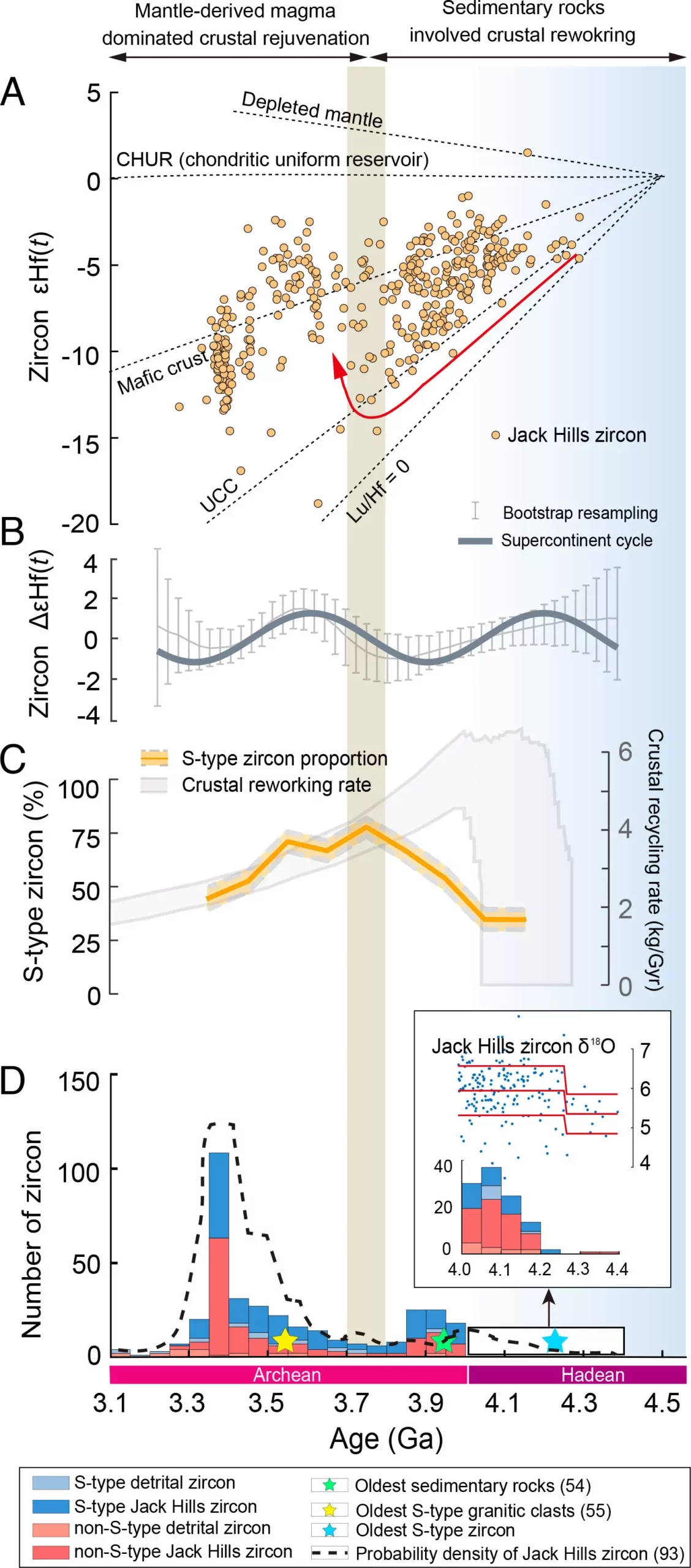An international team of geophysicists recently made a groundbreaking discovery that challenges the conventional timeline of Earth’s plate tectonics. Published in the Proceedings of the National Academy of Sciences, the study focused on analyzing zircons from Jack Hills in Australia, shedding light on the possibility that plate tectonics may have begun much earlier than previously believed.
Revising Earth’s History
While the prevailing notion among scientists is that plate tectonics emerged on Earth around 3 billion years ago, only 1.5 billion years after the planet’s formation, the new findings present a compelling case. By examining zircons, which are considered the oldest material on Earth, the research team uncovered zircon samples dating back as far as 4.3 billion years ago, suggesting a much earlier initiation of plate tectonics.
Zircons, known for their durability and ability to preserve geological information, play a crucial role in understanding Earth’s history. The team’s analysis revealed distinct types of zircons, including those formed directly from magma and others originating from sedimentary rocks. By studying the mica content in samples, researchers were able to differentiate between the two types and draw meaningful conclusions regarding Earth’s ancient processes.
Recognizing the complexity of analyzing numerous zircon samples, the team utilized an artificial intelligence (AI) application to streamline their investigation. By training the AI on a wide range of samples, researchers were able to identify a substantial portion of S-type zircons in their collection, indicating an average age of 4.2 billion years. This revelation hinted at significant geological events, such as the rise of landmasses from the sea during that era.
The AI application not only facilitated the identification of zircon types but also revealed a fascinating timeline of changes within the crystals over time. These fluctuations pointed towards shifts in the Earth’s continental structure, aligning with the patterns typically associated with plate tectonics. By reevaluating the evidence provided by zircons, scientists gained valuable insights into the early stages of Earth’s dynamic geological processes.
The recent study on zircons from Jack Hills underscores the importance of reexamining Earth’s history through a fresh lens. By challenging existing theories and leveraging innovative technologies like AI, researchers are paving the way for a deeper understanding of the planet’s complex evolution. The findings not only reshape our perception of early plate tectonics but also highlight the invaluable contributions of zircons in unraveling Earth’s ancient mysteries.


Leave a Reply